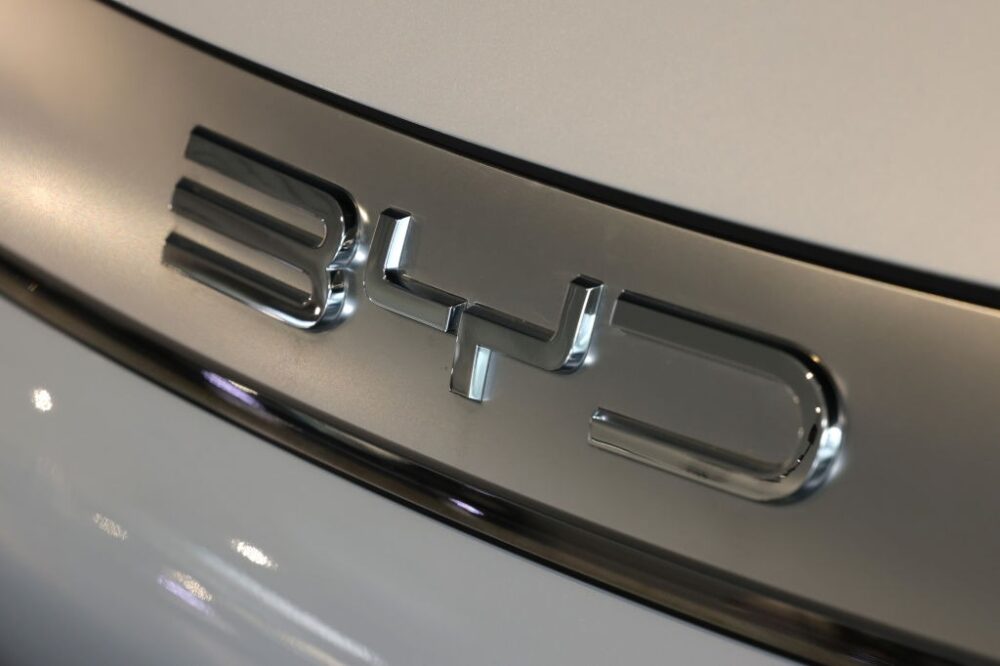European EV decline driven by incentive effect
30 October 2024

A severe drop was recorded in European electric vehicle (EV) deliveries in August, worsened by a skewed result from last year. José Pontes, data director at EV Volumes, explores the market with Autovista24 journalist Tom Hooker.
A total of 184,800 new EVs took to European roads in August, down 30% year on year. This included a 34% battery-electric vehicle (BEV) slump and a 19% plug-in hybrid (PHEV) decline. Meanwhile, the overall new-car market fell 17% compared to 12 months prior.
Plug-in models took a 24% share of the new-car market during the month, with BEVs alone accounting for 17% of registrations. In the first eight months of the year, EVs captured 22% of the new-car market, one percentage point (pp) down on 2023. Meanwhile, BEVs took a 14% share from January to August.
An unnatural situation
This severe monthly drop in EV deliveries was skewed by an unnatural market situation last year. In August 2023, commercial buyers in Germany rushed to purchase a BEV before subsidies for the technology ended at the start of September. This meant all-electric vehicles led the country’s market for the first time, growing 170% year on year.
Excluding Germany from this year’s results, BEVs would have dropped just 10%, an improvement of 24pp. In this scenario, they outperformed PHEVs (down 23%) as well as petrol (down 21%) and diesel (down 28%) deliveries.
BEVs vehicles also performed better than the overall new-car market (down 12%), when removing Germany from the figures. All-electric models were only beaten by hybrids, including full and mild-hybrids, which were up 11%.
Furthermore, BEVs enjoyed growth in Denmark, Belgium and the Netherlands, despite the broader declining trend.
Tesla’s comfortable lead
The Tesla Model Y was once again Europe’s best-selling EV in August. The crossover recorded 13,586 registrations, almost double the amount of second place.
Yet its performance is not as dominant as it once was, as the market’s natural limits are starting to take effect. Additionally, its sibling, the refreshed Model 3, is starting to steal deliveries in some markets.
During August, the US model saw its highest volumes in Norway, with 2,107 units. This was followed by France (2,096 units), Germany (1,957 units), the UK (1,450 units), Sweden (1,101 units) and the Netherlands (1,064 units).
In second was the Volvo EX30, reaching 6,878 deliveries. The made-in-China crossover trailed the Model Y by 6,708 units. Belgium was the EX30’s biggest market with 975 registrations. The model also proved popular in the Netherlands (944 units) and Norway (932 units).
The Skoda Enyaq took third in August, with a year-best result of 6,236 deliveries. After coming sixth in July, demand is recovering thanks to a recent refresh. A top-five position is possible for 2024. However, this depends on the performance of its rivals built in China and the impact of tariffs.
Its largest market was Germany (1,849 units), as Norway (816 units) and the UK (720 units) also posted strong volumes.
Audi’s positive performance
The Tesla Model 3 came in fourth, recording 5,823 registrations. Despite its falling European sales, it is expected to take second behind the Model Y in the annual table. The UK was its largest market with 1,530 units, while Belgium (595 units) and the Netherlands (460 units) boosted deliveries.
The Audi Q4 e-Tron finished fifth, reaching 4,353 registrations. The compact crossover is built on the Modular Electric Drive Matrix (MEB) platform like the Volkswagen (VW) ID.4. Although the model is more expensive than its group sibling, starting at around €50,000, it outsold it in August by 222 units.
Its stablemate, the bigger and more expensive Q6 e-Tron, has not affected the model's performance. The Q4 e-Tron saw success in its domestic market of Germany with 893 deliveries, followed by the UK (750 units). Belgium (700 units) also saw strong results thanks to its strong BEV company car incentives.
The Q4 e-Tron is seeing competition from the rising BMW iX1. It secured seventh in August with 3,631 registrations, around 700 units behind its German rival. Meanwhile, the BMW i4 came ninth with 3,480 deliveries.
The Ford Kuga PHEV was the best-placed plug-in hybrid, finishing 11th with 3,218 registrations.
VW surprises
Confirming the strength of the MEB platform models, the Cupra Born claimed 12th, reaching 3,150 deliveries. The VW ID.7 also uses the MEB architecture and surprised with a record result during August. It entered the table in 14th with 2,834 registrations. Meanwhile, the Mini Cooper Electric had a strong month in 18th, posting 2,585 deliveries.
Outside the top 20, the Renault Scenic (2,165 units) became the brand’s best-seller. The Mercedes-Benz EQB also had a positive month, recording 2,157 deliveries.
The MG4, which came eighth in July’s table, placed outside the top 20 with 2,095 registrations. Elsewhere, the Ford Explorer EV completed its first full month on the market, recording 1,483 deliveries.
Model Y’s advantage grows
The Tesla Model Y remained the most popular EV in Europe between January and August, with 127,744 registrations. It accounted for 6.9% of all plug-in deliveries. The US model sat over 55,000 units ahead of the Tesla Model 3 in second. The Tesla Model Y is now set to win its third best-seller title in a row.
Second place also seemed secure. More than 18,000 units separated Tesla’s sedan (72,230 units) and the Volvo EX30 (53,923 units). However, the battle for third is less clear. Around 8,000 units separated the Swedish model and the Audi Q4 e-Tron in fourth (45,806 units).
Making moves
One model feeling the weight of EU tariffs on BEVs made in China is the MG4 (38,893 units). It dropped to sixth in the year-to-date table at the end of August. It was overtaken by the Skoda Enyaq (40,148 units) after its strong result in the month.
Meanwhile, the VW ID.4 passed the Volvo XC60 PHEV for seventh. Despite gaining ground, third place seems out of reach for the BEV, which claimed the position in 2023 and 2022.
The BMW i4 took 11th ahead of the Volvo EX40 and its PHEV version, the XC40. Overtaking the Peugeot e-208 was the Ford Kuga PHEV, which claimed 13th. The SUV was over 7,000 units behind the Volvo XC60 PHEV.
Elsewhere, the Kia Niro EV passed the Mercedes-Benz GLC PHEV for 15th. Considering the brand will be bringing out the cheaper EV3 soon, this is a surprise result for the Korean model. Another SUV moving up was the Mercedes-Benz EQA, placing in 17th.
The Cupra Born joined the top 20 in 18th. Meanwhile, the Fiat 500e overtook the Renault Megane E-Tech for 19th. For the Fiat 500e, this is a long way behind its position from 12 months ago, when it sat in eighth.




